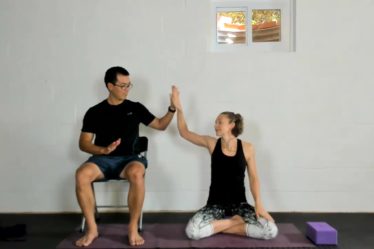
Today’s post is the final article in this 4 week series. We’ve covered why the practice is beneficial, how it works in the body, and what it does (or doesn’t) have to look like. Today I want to offer my last bit of advice before the live/daily practice sessions begin. You could even print out these lists as gentle reminders to yourself along the way. Remember, I said this is going to be a process. I’ve also mentioned that it’s not necessarily easy. So keep that in mind and give yourself some grace.
SET YOURSELF UP FOR SUCCESS
- Have a plan
- Commit to these ten, consecutive days, and figure out ahead of time how you can make it happen.
- Try to complete the practice at the same time every day (could be first thing in the morning, maybe your lunch break, maybe before bed. Any time of day that allows you to be consistent).
- Set an alarm on your phone or a calendar/email reminder.
- Create a quiet, comfortable space for your practice (indoors or outdoors) with few distractions.
- Let your family know what you’ll be doing in advance — hopefully that can prevent some interruptions.
- Have everything you will need close by, including a journal/notebook and writing utensil. You may also want a timer or if you are using an app, make sure your device is on a do not disturb mode to avoid incoming messages.
- If you aren’t joining the live sessions, find an accountability buddy (spouse, friend, child, parent, co-worker) to do it with you.
I have vivid recollections of yoga teacher training and how I got “tricked” into meditating. The instructors assigned the homework at one of our first meetings. All they said was find 5 minutes a day to sit in stillness and write a few sentences in your notebook / journal afterwards. Sounds pretty benign. At the time life was busy and the house never seemed to be quiet enough for me. I’m pretty sure that was the start of my early morning “stillness” practice. I would set the alarm for 5am so that I could wake up a bit, finish my session, and get it all done before the morning began for anyone else. At some point during the 4 months of training I even built myself a little 10×10 space in our unfinished basement. No kids allowed.
It definitely did the trick. I was alone. It was quiet. The people in my house knew what was expected of them if I was in that space. I did everything in that list above to set myself up for success, and guess what. The habit stuck. What I did given my environment and constraints won’t necessarily work for you. BUT if you follow those guidelines, it will be a GREAT starting point.
IT’S A PRACTICE
There’s a reason we refer to our physical yoga sessions as a practice. We show up to our mats, we see what’s there each day (or not) and adjust accordingly. We tweak things here and there and we learn along the way. Every day is different. It’s a journey.
Your mindfulness practice is no different. It’s a process. Each time you spend a few moments, consciously breathing and finding a bit of stillness, you hone that skill. You learn something new. You notice a new pattern or habit. You find out something new about yourself.
With all the time I’ve been spending thinking about mindfulness this month, my own personal practice has felt particularly challenging. I’m simultaneously having thoughts about tips and tricks to share WHILE I’m trying to find stillness. One recent morning I had barely started my practice and a woodpecker began banging it’s beak on our METAL gutters. Repeatedly. Another day, it was barely past 6am and I could hear my son having a very LOUD meltdown inside the house while I was on the porch trying to meditate. Let’s just say that the practice on those days was challenging to say the least. Maybe they weren’t as calming as I’d hoped they would be. But, I showed up the next day, and the next day, and the next day just the same.
BE KIND TO YOURSELF
- Beginning a new (or recreating an old) mindfulness habit isn’t easy.
- Your mind is a busy place and it takes practice learning how to navigate and quiet the chatter.
- It can be frustrating — You aren’t doing it wrong!
- Be patient with yourself, you don’t go from 0 to zen in just a few minutes
- Be open to trying new things, and allow for some trial and error
- Start slow, and build gradually — You don’t have to spend an hour a day meditating.
- You will interrupt yourself with your own thoughts. That’s what the mind does. It’s a process of learning to recognize when it happens, allowing the thoughts to be there without judgement, and then trying to let them go again.
- Some thoughts and emotions may come up that you weren’t expecting. Be prepared for that possibility. Consider who would be a good person for you to reach out to if you need help processing these feelings. Friend, family member, co-worker, counselor, therapist, etc.
We all have different circumstances and I can’t predict what obstacles you will face in creating this practice for yourself. However, we will all face challenges in completing these daily sessions, and the challenges themselves may differ from day to day. It’s okay. That’s life. Just try it again the next day and see if it’s any different. Just show up and see what is there and do the best you can.


